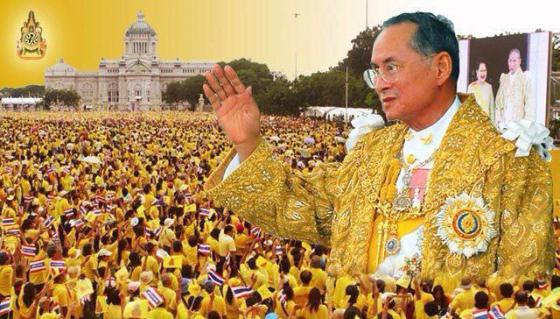If you are planning to travel to Thailand, you are in for an absolute treat. It is a country with a rich history and culture and it will serve you well to know something about this before you travel there. This is because when you understand a local culture, you will be able to act in a manner that respects that culture and its customs. Let’s take a look at Thailand’s history and culture, and how you can respect this.
A Brief History of Thailand
Thailand is believed to have been established in 1238, when the then capital city of Sukhotai was established in the north of the country. However, evidence suggests that there were settlements in the country long before this. In 1350, the capital was changed to Ayutthaya by orders of King Uthong. Ayutthaya is to the north of what is now known as the city of Bangkok. The city of Ayutthaya prospered for well over two centuries. However, Thailand went to war with Burma, and their armies destroyed Ayutthaya in 1767. Following this, a new capital was founded at Thonburi on the Chaoy Praya River’s west bank. In 1782, the city moved to what is now Bangkok. To this day, Thai people refer to Bangkok as Krung Thep.
Southeast Asia became heavily colonized during the 19th century. However, Siam, which was Thailand’s name during that period, always maintained its independence. They achieved this by playing the different European powers against each other. As a result, the country was able to benefit from the material aspects of colonization, like better infrastructure in terms of roads and railways, as well as becoming introduced to western cultures and reforms.
More recently, Thailand is mostly known by a government with a lot of instability. There have been several military coups. However, the government of Thailand has always been and continues to be a monarchy. It is currently ruled by King Bhumibol, who ascended the throne in 1946, making him the longest continuously reigning monarch in the world. Because the country was never colonized, it has always been able to maintain its original culture, something each monarch has encouraged. The country is full of stunning palaces, each of which shows certain elements of the time periods during which they were constructed. Although some have been destroyed during wars and because of natural decay, many of them can still be visited and appreciated.
Thai Culture and Society
Bangkok is an amazing city where you will find both modern buildings in the style of the west, as well as ancient traditional temples. Outside of Bangkok, however, people are strongly committed to retaining their original culture and roots. For instance, in the Karen villages in the north of the country, women still wear rings around their necks to elongate them. The biggest source of income for the Karen’s is tourism because many people are fascinated in these women.
The Thai are a very agricultural people. The majority of people cultivate wet rice, although jute and tapioca are also grown in the North East. Rubber is grown in the South and vegetables in the North. Additionally, there is a large production of coconuts and fruits in the country.
Religion in Thailand
Most of Thailand follows the Buddhist religion. As a result, there are many temples and shrines both in the countryside and around the larger cities. These temples are fully dedicated to Buddhism and it is advisable for tourists to endeavor to visit at least one of them while they are in Thailand. The reclining Buddha, which is the largest Buddha in the country, is by far the most interesting one. You can find it in Bangkok’s Wat Pho area.
Respecting the Local Culture
Thailand is all about having fun, but this doesn’t mean you shouldn’t show respect to local cultures. One thing you must remember, therefore, is that the monarchy is highly respected. You may not speak negatively about the King, Queen or their children.
In terms of religion, you should dress in neat clothing when you visit a shrine. Although Thailand is greatly dependent on tourism for its income, they will refuse entry to those who show up improperly dressed to temples or shrines. There are a number of places, including the King’s Palace, where you are able to hire appropriate clothing. However, these tend to be very hot and heavy sarongs, which is generally uncomfortable as well as unhygienic. As such, make sure you dress properly by covering your knees, midriff and shoulders and always wear neat shoes. Make sure your shoes are easy to take off and put on, as well, as you will need to take them off in any temple when you try to enter the chapel, where the monks keep the main image of the Buddha.
For the Thai, any image of Buddha is sacred, regardless of its size or condition. As such, you should never do anything that could show disrespect towards these images. Something you shouldn’t do, for instance, is climb on top of a statue to have your photograph taken. Additionally, remember that men are not allowed to have physical contact with women, nor can they expect to receive anything that comes directly from a woman’s hand.
Thai people have been exposed to western cultures sufficiently to understand the concept of the handshake in greeting. However, since physical contact between men and women is unacceptable, most people still greet each other with the wai, which is where the palms are pressed together in a prayer-like gesture. Generally speaking, the youngest person should wai first, and this is then returned by the older person. Respecting the elderly is very important in Thai culture.
Additionally, the Thai’s have particular reverence for the head, which is both literally and figuratively the highest part of the body. Hence, do not touch people on the head. It is also seen as disrespectful to point your feet at objects or people. Indeed, this is believed to be incredibly rude and has gotten people into trouble in the past. When you enter the home of a Thai person, you will always be expected to remove your shoes.











